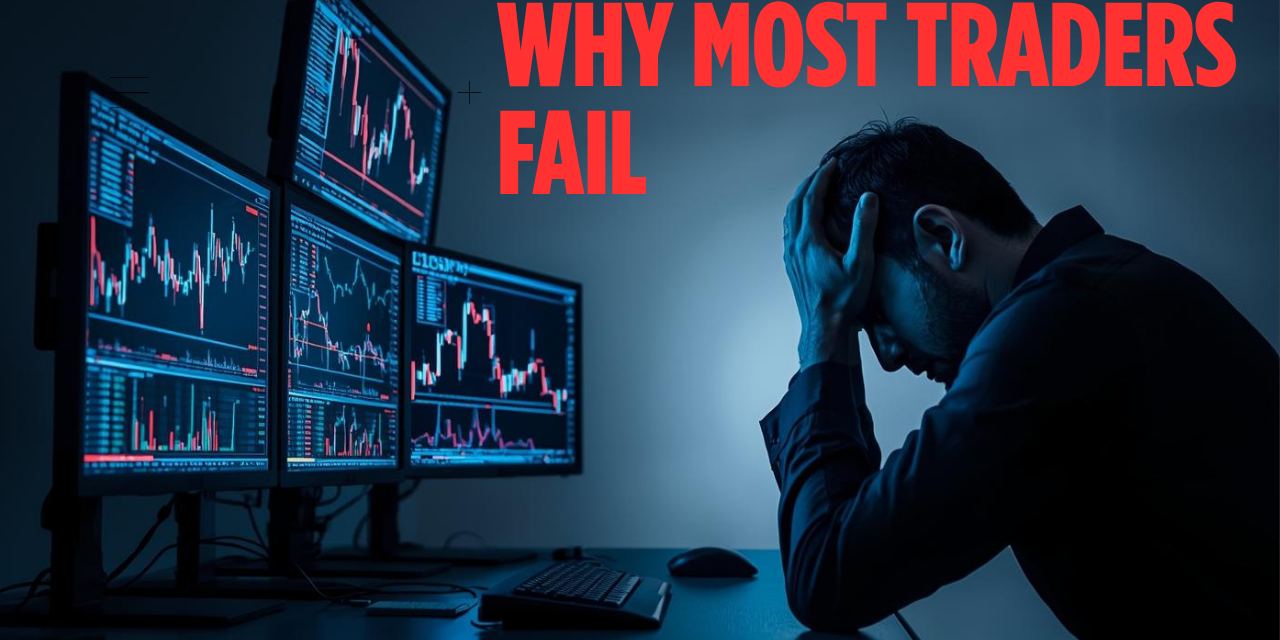In the eye-opening free video “Why Most Traders Fail”, Maverick Trading dives into the fundamental reasons that derail so many retail traders. Beyond bad strategies or market conditions, the real culprits are often emotional, psychological, and rooted in poor risk management. This content is essential for anyone serious about trading — because once you understand why failure happens so frequently, you can begin to avoid the traps and trade with purpose.
Here, we break down the most common failure points covered in the video, offer insights into how to fix them, and provide a roadmap to develop discipline, structure, and a long-term mindset that supports consistent profitability.
Lack of a Clear Trading Plan
One of the most persistent reasons traders fail is that they jump into the markets without a well-defined trading plan. As noted by psychology and trading-risk experts, traders often enter trades based on hunches, rumors, or emotional impulses — not a clear set of rules.
A solid trading plan should outline:
- Entry and exit criteria
- Risk-management rules (how much to risk per trade)
- Position sizing guidelines
- Profit targets and acceptable drawdowns
Without this, even a good strategy can crumble under real-world pressure.
Poor Risk Management
Failure to protect capital is another major reason why most traders fail. Many traders risk too much on individual trades, use excessive leverage, or neglect stop-loss orders.
Some specific issues include:
- Overleveraging: Excessive use of margin magnifies losses and can lead to rapid account depletion.
- No or improper stop-loss: Without a stop-loss, traders may hold on to losing trades and suffer greater drawdowns.
- Risking too much on one trade: Better traders limit their risk to a small percentage of their trading capital per trade.
Managing risk properly means staying in the game long enough for your edge to work.
Emotional and Psychological Mistakes
The video underscores that psychology, more than strategy, is often the biggest obstacle. Greed, fear, FOMO (Fear of Missing Out), overconfidence, and revenge trading create cycles of bad decision-making. Medium
Here are some of the most damaging psychological traps:
- FOMO: Chasing trades because price is moving fast, rather than waiting for proper setups.
- Overtrading: Taking too many low-quality trades just to feel active or “in the game.”
- Revenge Trading: Trying to “make back” losses after a bad trade often leads to even bigger mistakes.
- Overconfidence: After a few wins, traders may go too big — only to be humbled by a market reversal.
- Loss Aversion: The pain of losses impacts decisions more than equivalent gains — causing traders to hold losing trades too long.
Maverick Trading emphasizes that controlling emotions is not about eliminating them — it’s about building a process that keeps them from driving your decisions.
Unrealistic Expectations
Many traders come into the market believing that massive profits are just a few trades away. But this often clashes with reality. According to trading sources, unrealistic goals and expectations set traders up for disappointment and loss.
Traders may:
- Expect to double their account quickly
- Believe in “get rich fast” trading success
- Use oversized position sizes because they think the next trade will be the big one
The antidote: Treat trading like a profession, not a hobby. Prioritize consistency and capital preservation over quick wins.
Insufficient Capital and Over-Leveraging
A small trading account combined with aggressive leverage is a recipe for disaster. Many traders don’t have adequate capital to survive drawdowns, and overleveraging magnifies every loss.
When capital is too tight:
- There’s little room for error
- One or two bad trades can deplete most of the account
- Traders may take bigger risks to try to “make it back” — increasing danger
Proper capital sizing and conservative leverage are foundational to long-term success.
How to Avoid the Traps and Build a Better Foundation
Maverick Trading doesn’t just highlight failure — it gives you a roadmap to succeed:
- Build a strict trading plan and write it down
- Use proper risk management: set stop-losses, limit leverage, size positions to risk capital thoughtfully
- Develop mental resilience: journal emotions, reflect on losses, and learn to trade without letting fear or greed run you
- Set realistic goals: focus on consistency over quick riches
- Stay adaptive: align your strategy to current market structure and conditions
- Track performance: use a trading journal to learn from every trade
Final Thoughts
The reason so many traders fail is not because the market is clever — it’s because they don’t understand themselves. In “Why Most Traders Fail,” Maverick Trading exposes the hidden mental and emotional pitfalls that trip up even the smartest or most well-funded traders.
By embracing a structured plan, managing risk with discipline, controlling your emotions, and committing to constant growth, you can sidestep the biggest traps. Watch the full video, internalize the lessons, and let the awareness of why most traders fail guide you to how you can succeed.








